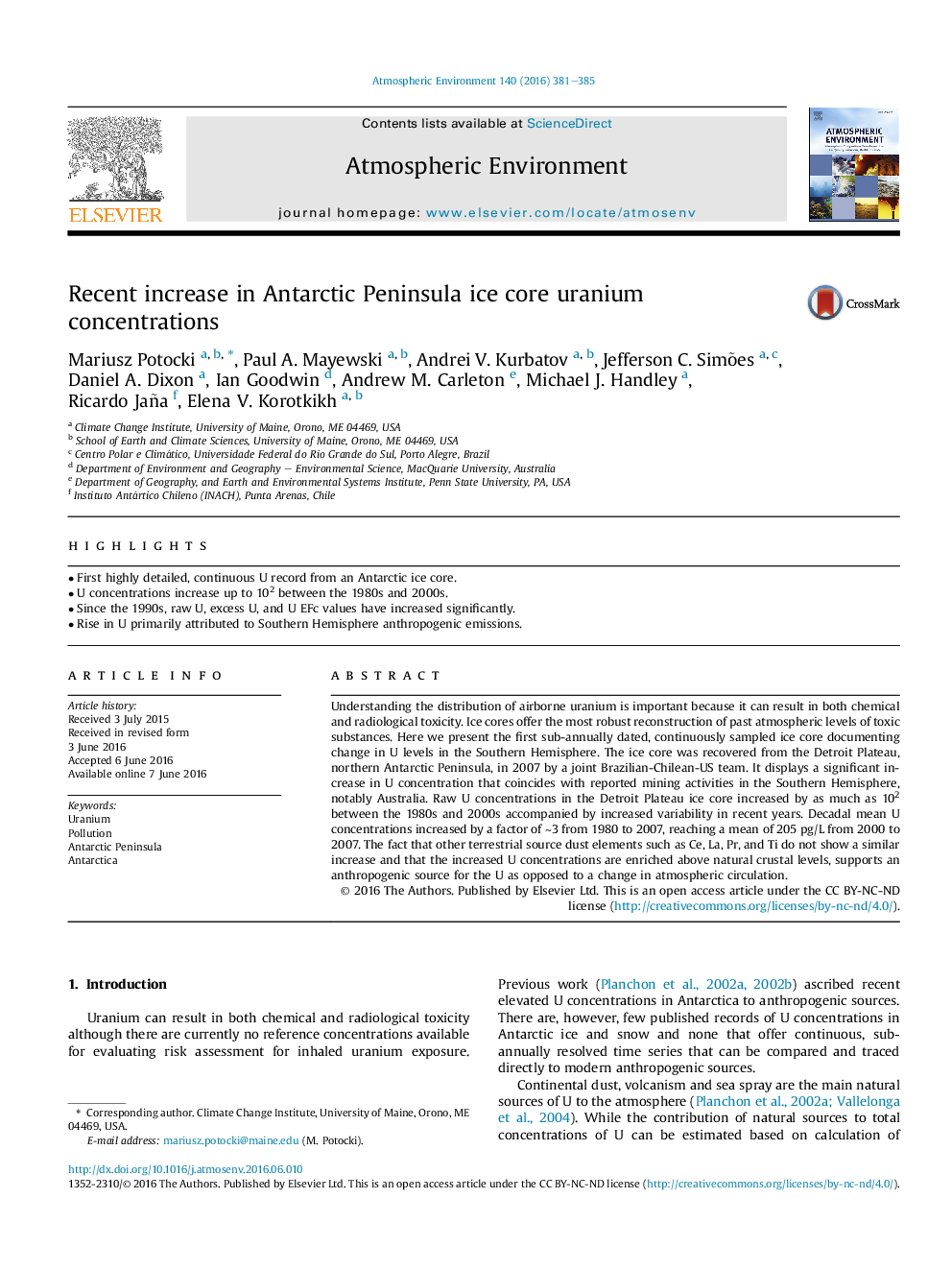| Article ID | Journal | Published Year | Pages | File Type |
|---|---|---|---|---|
| 6336209 | Atmospheric Environment | 2016 | 5 Pages |
Abstract
Understanding the distribution of airborne uranium is important because it can result in both chemical and radiological toxicity. Ice cores offer the most robust reconstruction of past atmospheric levels of toxic substances. Here we present the first sub-annually dated, continuously sampled ice core documenting change in U levels in the Southern Hemisphere. The ice core was recovered from the Detroit Plateau, northern Antarctic Peninsula, in 2007 by a joint Brazilian-Chilean-US team. It displays a significant increase in U concentration that coincides with reported mining activities in the Southern Hemisphere, notably Australia. Raw U concentrations in the Detroit Plateau ice core increased by as much as 102 between the 1980s and 2000s accompanied by increased variability in recent years. Decadal mean U concentrations increased by a factor of â¼3 from 1980 to 2007, reaching a mean of 205Â pg/L from 2000 to 2007. The fact that other terrestrial source dust elements such as Ce, La, Pr, and Ti do not show a similar increase and that the increased U concentrations are enriched above natural crustal levels, supports an anthropogenic source for the U as opposed to a change in atmospheric circulation.
Related Topics
Physical Sciences and Engineering
Earth and Planetary Sciences
Atmospheric Science
Authors
Mariusz Potocki, Paul A. Mayewski, Andrei V. Kurbatov, Jefferson C. Simões, Daniel A. Dixon, Ian Goodwin, Andrew M. Carleton, Michael J. Handley, Ricardo Jaña, Elena V. Korotkikh,
